Nissin has responded to the minor head zooming issue described in this article. All newer flashes will include the fix in their firmware. The earlier units can be updated for free by Nissin. (Contact your local Nissin dealer for more details.)
Nissin Di700 speedlight bridges the gap between Nissin Di622 II and Nissin Di866 II flashes. Similarly to Di622 Mark II, Di700 is extremely easy to use, but at the same time, it incorporates a number of higher end features that can be found in the top-of-the-line Di866 Mark II unit. In this review, we are taking a close look at the new Di700 flash from Nissin.
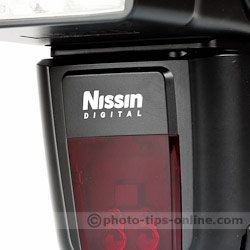 |
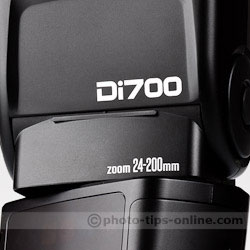 |
With its contemporary clean look, Nissin Di700 is one of the most stylish flashes on the market today. While this is a matter of taste, we believe many photographers will like the appearance of the flash, which can also impress the clients when on a set. High quality materials and solid construction make you feel that this flash will be serving you for years.
 |
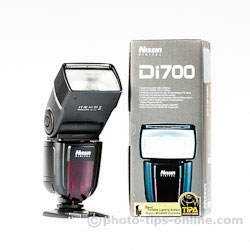 |
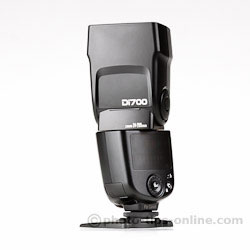 |
 |
We should also add that the mounting foot is metal for high durability. The mounting ring/knob is well-sized and very comfortable to use. Even though there is no quick-release lock, we really like how the mounting is implemented.
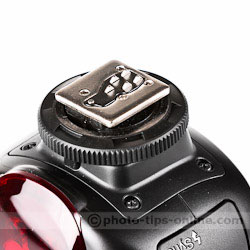 |
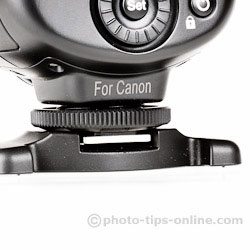 |
Di700 is practically as big as the flagship units from other brands, like Canon 600EX-RT, Nikon SB-910, etc. Often flashes of this size weigh close to a pound (450 grams), but Nissin Di700 weighs only 350 grams, which can be important for some photography applications (like, for example, on-camera use during all-day events).
Nissin Di700 delivers a lot of power. It has a Guide Number of 54 at 200 mm zoom and 48 at 105 mm, which is about 1/2-stop less than flagship units like Canon 600EX-RT or Nissin Di866 II.
Nissin Di700 is quite unusual in how it adjusts the output levels, but we'll get back to it in a bit (after the Controls and Display section).
We found that with freshly charged Ni-MH batteries the average recycling time at full power was 3.6 seconds, which is even less than 4 seconds specified in the instruction manual. While this is not the best performance we saw in a speedlight, the recycling speed of Di700 is pretty good. When used with a Nissin PS8 power pack, its recycling time at full power can get as low as 0.7 seconds, which is very impressive.
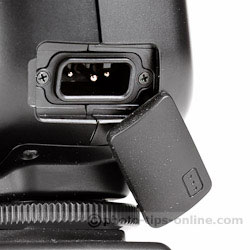 |
When fired rapidly at the maximum output level, flashguns tend to overheat. As you would expect from a modern speedlight, Nissin Di700 has a thermal cutoff feature. It shuts down the operation of the flash for up to 15 minutes when internal temperature raises to a potentially dangerous level (normally after 20-30 consecutive full power pops). Once the flash cools down, it resumes operation.
Controls of the Di700 flash are very simple. Indeed, the flash has a select dial with a set button, power button, and a test button. The later two serve the obvious purposes of turning the flash on and off and doing a test firing. All the rest is controlled by the select dial and the set button.
The menu display is not an LCD but an array of LED's covered by a black screen with colored windows for the LED's. We really like the way it looks. It is stylish yet very functional. The menus are simple and easy to follow. All you do is select a mode and change the main parameter of the mode, like exposure compensation, light output, or wireless group.
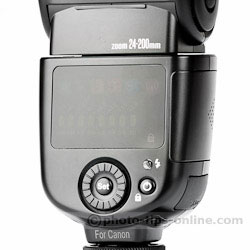 |
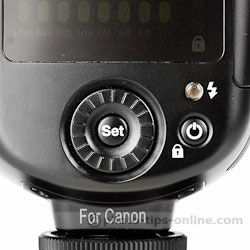 |
Such a minimalistic interface design comes at a price, of course. The more advanced features, like second curtain sync, for example, cannot be set on the flash. They have to be controlled via in-camera menus (some older camera bodies do not have in-camera flash menus, but most of the modern cameras do).
So, here is what you can control from the Di700 flash:
The additional features you can control from the camera are:
Nissin Di700 has a handy control lock feature that prevents the settings from an accidental change. To lock or unlock the controls, you simply press the power button (you need to press and hold to power off). This function is especially valuable when you use the flash handheld. In fact, in one of our photo sessions, the assistant, who was holding the remote Di700, was not aware of the locking feature and accidentally did change the settings a couple of times because he had to move around quite a bit. So, we recommend locking the controls in a situation where you are likely to touch the select dial inadvertently.
As we mentioned above, the Di700 flash is fairly unusual in the way you can control the light output. If you look at the menu screen, you can see that the power is adjusted in full f-stops when in Manual, Sd or Sf modes: from 1/1 down to 1/128. However, in TTL mode, the adjustments are made in 1/2-stop with the select dial. So, you can go up and down 2 full f-stops. However, if you want even finer control, you can change the flash exposure compensation in 1/3-stop increments, which is supported by the majority of modern camera menus. On top of that, the flash exposure compensation you set in the camera is actually added to what you set on the flash. So, if your flash setting is +1.5-stop and the camera setting is +0.3, you get a total of +1.8 f-stop compensation.
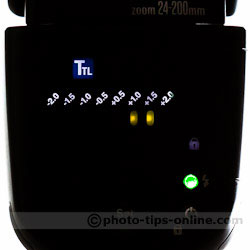 |
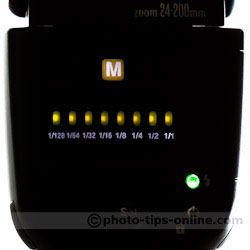 |
Now, you might think: what if you set the power in Manual mode in the camera, too. Do you get 1/3-stop increments? Well, the answer is no. The values are rounded up or down to the closest full f-stop. So, if you are an off-camera shooter who wants the highest degree of lighting control in the Manual mode, Nissin Di700 may not be able to deliver the flexibility you need, but for many photographers, this should not be an issue.
Unlike other Nissin flashes, Di700 is the first unit in the line-up to offer a head lock. Non-locking flash heads have an advantage of being able to rotate freely at any time without pressing a release button. This is useful for quick flash head adjustments. However, the drawback usually is that when used with relatively heavy and big light diffusers, these flash heads may have troubles staying in place. Nissin Di700 went down the route of having a lock, which firmly locks the head in the forward and vertical positions. This makes the flash perfect for use with the widest range of flash light modifiers that attach directly to the flash head.
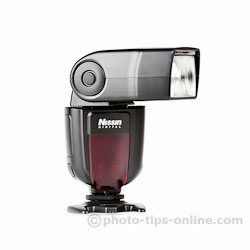 |
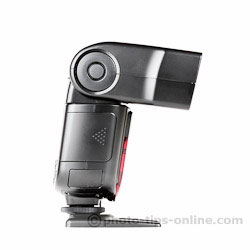 |
The flash head of Di700 rotates from -180 to +180 degrees and tilts from -7 (for macro shots) to +90 (vertical bounce). This gives you the best number of options for bouncing the light off of the walls and ceilings around you. And the built-in catchlight card adds even more bouncing capabilities.
In the auto zoom mode, Nissin Di700 "follows" the lens zoom from 24 mm to 200 mm, which is great because most flashes can only cover up to 105 mm on the longer end. With the built-in wide-angle panel, Di700 can cover up to 16 mm field of view.
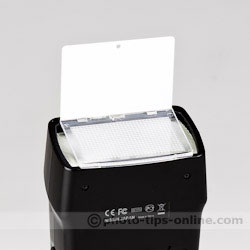 |
If you use lenses longer than 200 mm, you may need to know that Nissin Di700 appears to have some sort of a glitch in the firmware (which will hopefully be fixed soon). When testing with a 300 mm zoom lens, we noticed that at around 250 mm, the flash set itself to 24 mm and at 300 mm it went to 28 mm. It looks like it cycles through the zoom positions instead of staying at the maximum. This is certainly not an issue for us, but if you need the flash to play along with your super telephoto lens, you will need to set the flash zoom manually.
Nissin Di700 has 3 different slave modes that allow the flash to be triggered remotely: Sf, Sd, and TTL slave. The Sf mode (stands for Slave Film) is a "dumb" mode, in which the flash is triggered by any single burst of light, such as from a manual speedlight or studio strobe. The light output needs to be set manually on the flash.
In the image below, Di700 was added to a studio setup on the floor behind the subject to illuminate the dress.
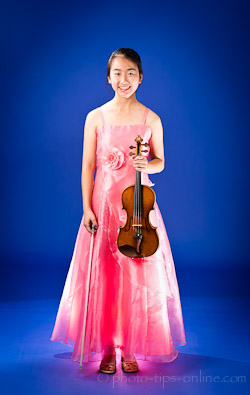 |
In the following shots, you can see that sometimes it may be worth putting your flash in places, just for the fun of it :).
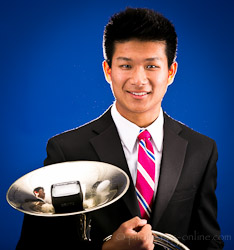 |
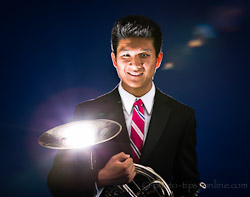 |
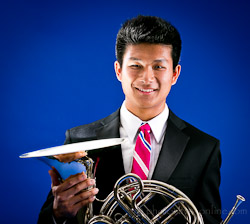 |
The Sd mode (Slave Digital) is also a "dumb" mode, in which the flash ignores a number of pre-flashes coming from a TTL speedlight. The beauty of this mode is that while the power still has to be set manually, the flash can be triggered by virtually any TTL system, even from a different manufacturer. So, you can mix your, let's say, Di700 for Canon with Nikon, Sony, or Pentax speedlights.
Finally, in the TTL slave mode, Di700 becomes a fully compatible wireless slave/remote within the system of your model of the flash: Canon E-TTL/E-TTL II, Nikon i-TTL, or Sony ADI/P-TTL. You can select any of the existing slave groups (A, B, or C), but you cannot select the channel. Unlike Nissin Di622 II, which can only be triggered by Channel 1, Di700 can be triggered by any of the 4 channels. So, on the master unit, you can select any channel you want, but you have to remember that photographers shooting nearby on any of the 4 channels will trigger your flash.
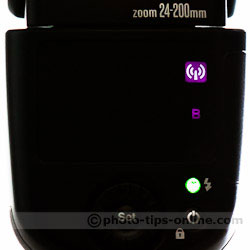 |
Nissin Di700 offers two ways of triggering via a cable: miniphone and PC. There are not that many speedlights out there that offer both. (There is LumoPro LP180, which is a manual-only flash.) So, whether you use PC sync, which is often criticized for not being dependable, or prefer the 3.5 mm miniphone connection for your radio triggers, Di700 got you covered.
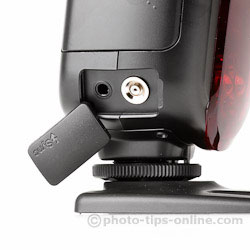 |
Speaking of the radio triggers, we tested the flash with the popular Pocket Wizard FlexTT5 transmitters, and it worked flawlessly via the hot-shoe and the cable connections.
Unlike the high-end Di866 II, Nissin Di700 does not feature a USB port for firmware updates, which means that over the years, it may potentially become not compatible with the new camera bodies introduced to the market. However, Nissin says that it will update the firmware for free if you buy from an authorized dealer. (You may need to pay the shipping cost, though.)
We also have to add that we like the magazine/cartridge design of the Nissin's battery compartment. It allows you to reload the batteries more comfortably, and if you buy a spare magazine, you can pre-load it and swap the batteries very quickly when it's critical for your assignment.
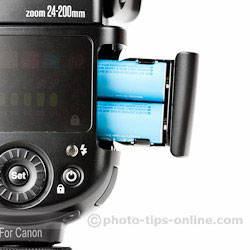 |
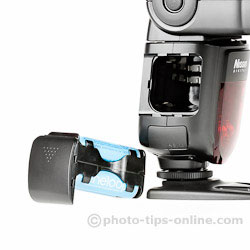 |
The auto-focus assist light is rated up to 19.7 feet (6 meters). In our test, we got good performance and fast auto-focus in the complete darkness, right up to the specified numbers.
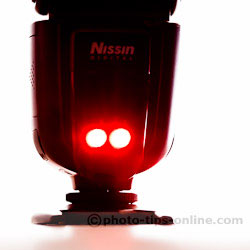 |
Nissin Di700 comes with a carrying pouch and a flash stand. The pouch has a belt loop, and the stand features a metal thread at the bottom, so it can be mounted on a light stand
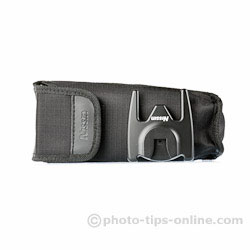 |
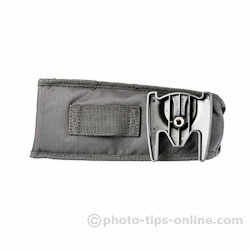 |
After using Nissin Di700 flash for a couple of months, we can say that we are overly impressed by its performance. It has enough features to fit the needs of a wide range of professional photographers, but yet it's so simple to use that a novice can handle it. It looks stylish and feels solid. It offers features like high-speed and second curtain sync, flash zoom up to 200 mm, and a variety of slave options. Some of the functions, however, need to be set in-camera and cannot be set on the flash. Di700 lacks a USB port, but instead, it offers both PC and miniphone sockets. The manual power adjustments can only be done in full f-stops, but the flash exposure compensation can be set in 1/2- and 1/3-stop increments. Nissin Di700 flash is definitely a good choice for an all-around on-camera speedlight, as well as a slave flash for multi-light setups.